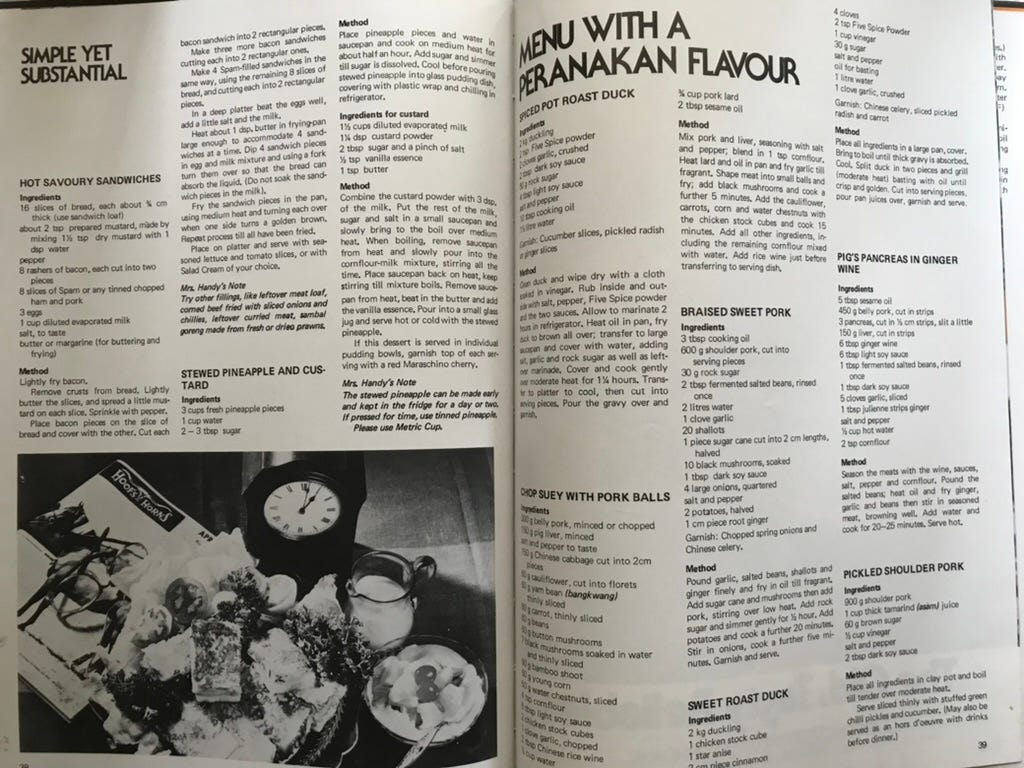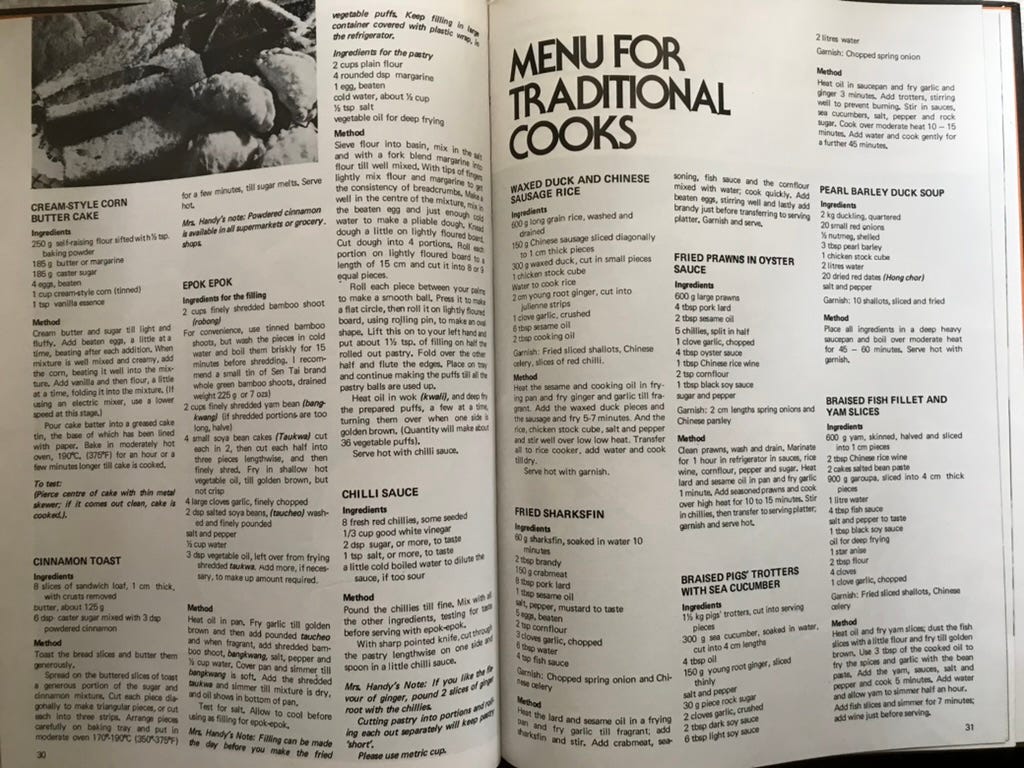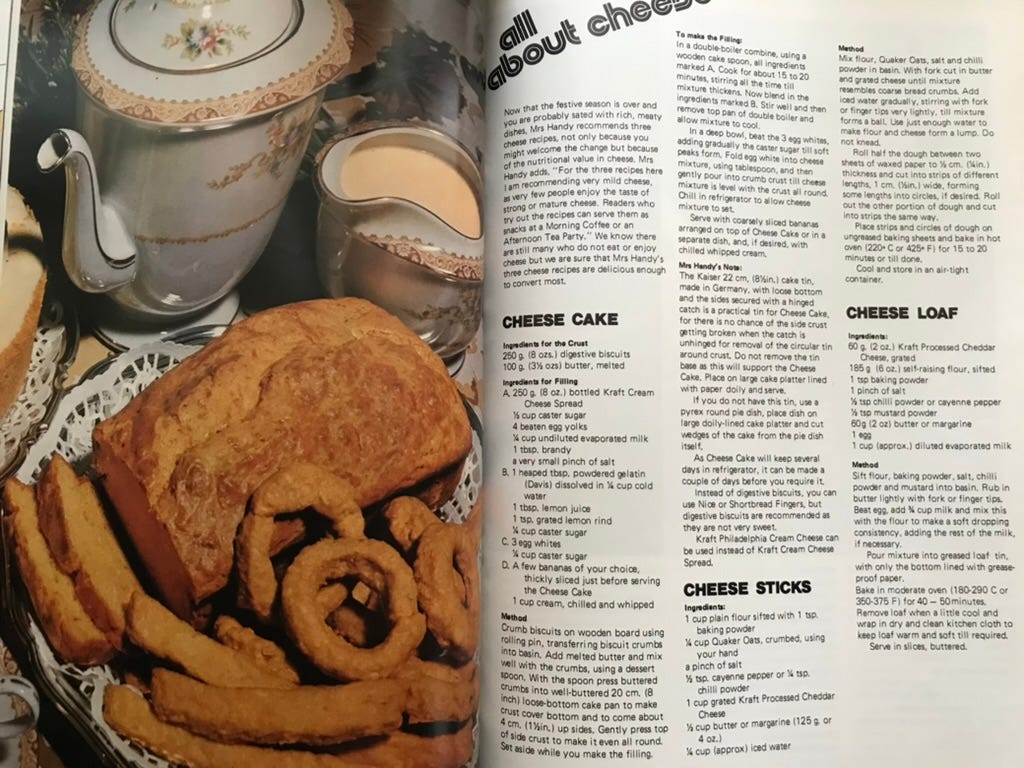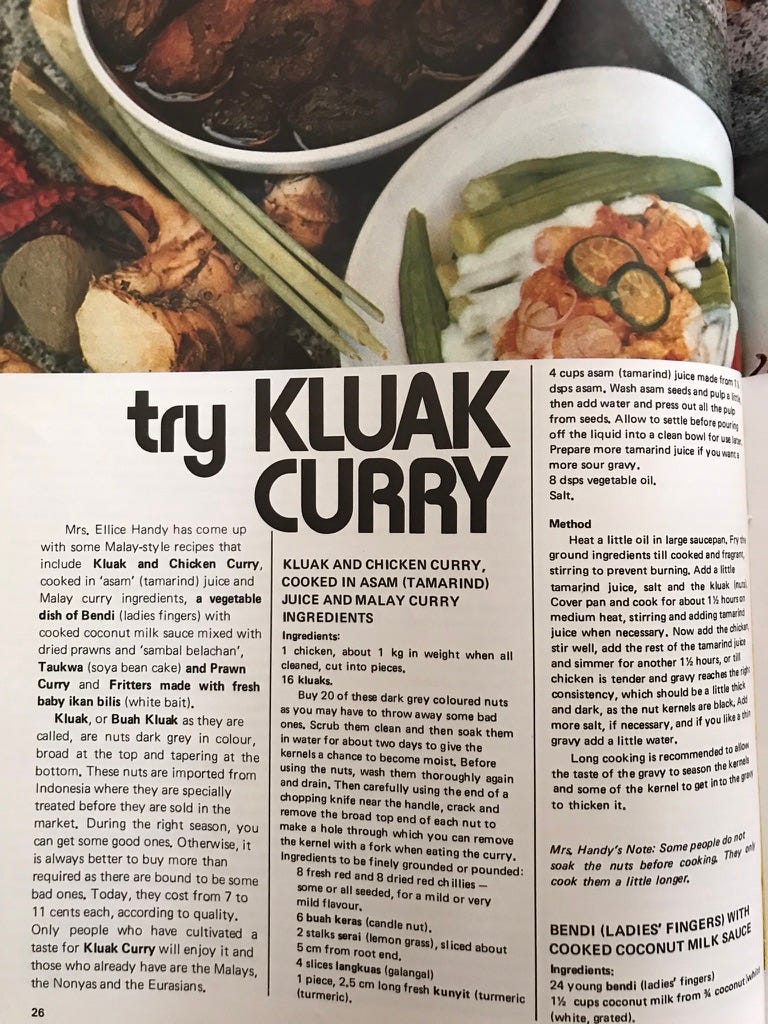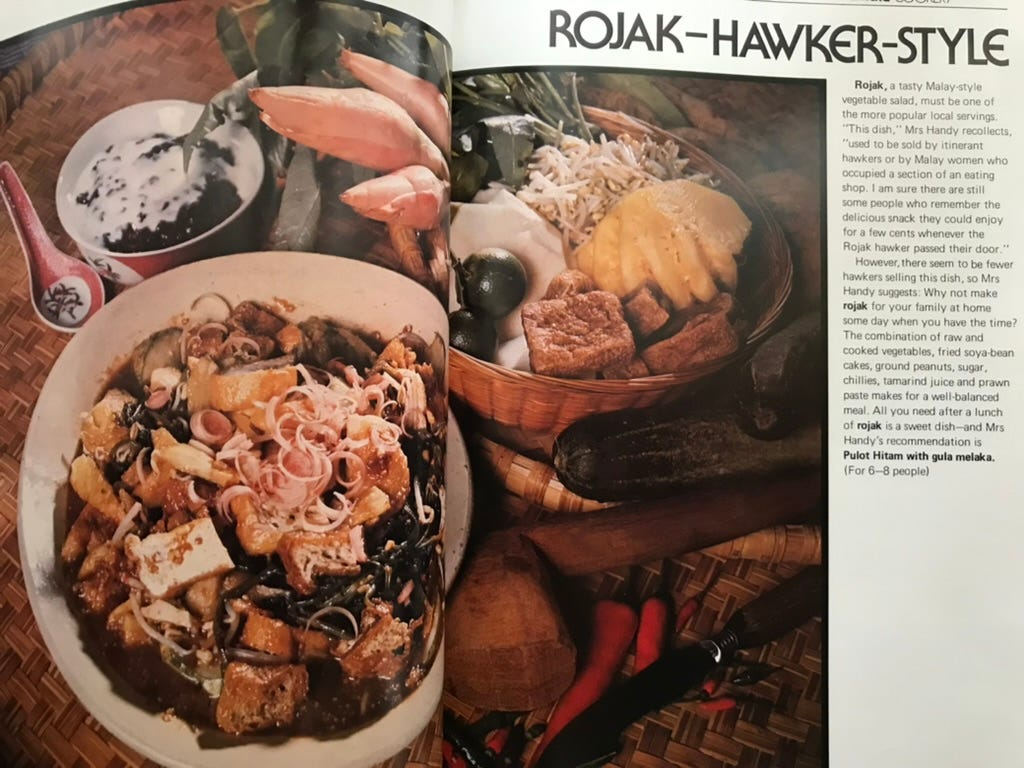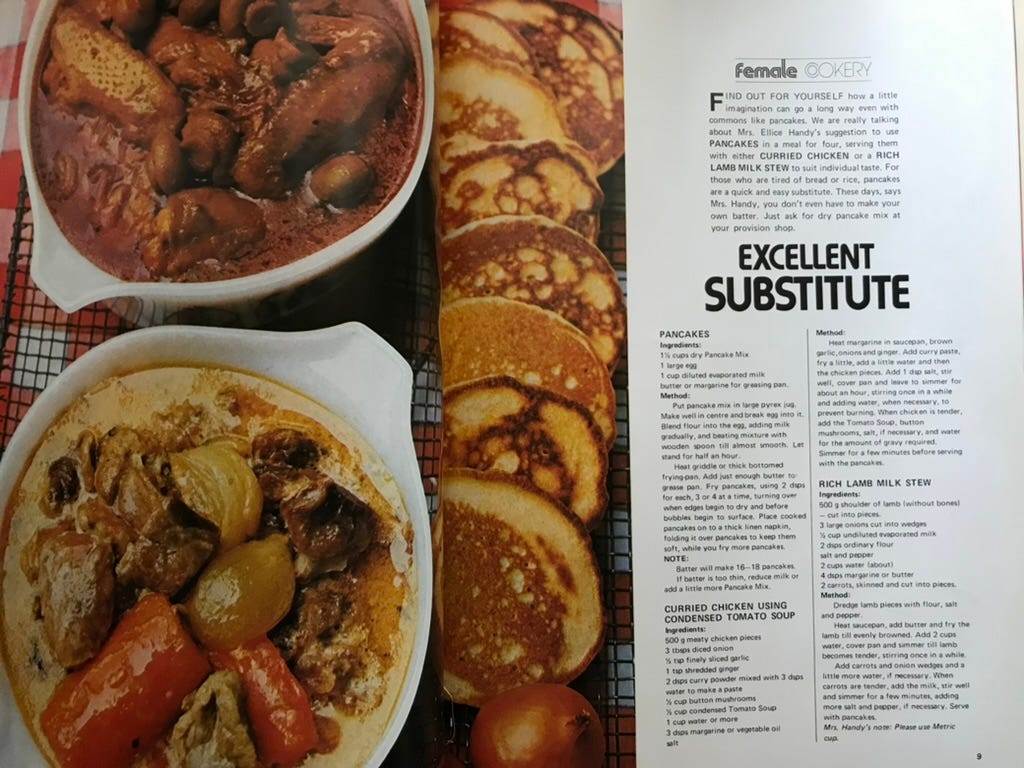no. 62: milieu
A double double kamsiah to Christopher for both the books and the inspiration (check out his (completely unplanned but perfectly timed) #mouldymonday post on that social media platform that privileges pictures over words).
Female magazine began in Singapore in 1974, and is the country’s second-oldest women’s magazine (I’m not sure there’s a real US equivalent). The cookbooks were compiled from its regular food columns, and were kind of a big deal when they were first printed. The 1977 edition was given to my mum shortly after publication, and cost S$11, which got you a rather lot of hawker meals back in the day.
Ellice Handy, given star billing on the covers, was perhaps the best known food writer of her day, and a regular contributor to Female’s food section. Before becoming a real-life Betty Crocker, she’d been a globe-trotting child prodigy and the principal of a Christian girls’ school. She seems to have been fond of evaporated milk.
Because the books are compilations, they’re full of whiplash-inducing juxtapositions, like spam and bacon sandwiches (soaked in evaporated milk) on one page, pig’s pancreas in ginger wine on the next.
Or cinnamon toast and a cake made with canned creamed corn, facing fried shark’s fin and pigs trotters with sea cucumber, which apparently require no introduction. The format makes me think they were published in separate issues of the magazine, but putting them side by side like this highlights how broad Female thought its readers’ interests were.
Those readers were women like my mum – educated, English speaking, and quite likely among Singapore’s first wave of women in the workforce (that they were homemakers was assumed). This is exactly how my mum cooked when her kids were growing up, and she absolutely did clip recipes out of newspapers and magazines. Bitter gourd and chicken curry for dinner, Kraft singles and tuna salad in Gardenia (Wonderbread, to my American readers) for lunch. My native culinary idiom is whiplash.
The writers’ base assumption seems to have been that their audience was fascinated by “continental cuisine” – dishes that used things like cheese (served with evaporated milk):
Cooking with Kraft was a sign of progress – even if, as the piece noted, “there are still many who do not eat or enjoy cheese.” This is what middle class cachet looked like to a nation that was, in a single body, clawing its way into it. That required a form of religious conversion too.
At the same time, the magazine would run these in-depth pieces on dishes with deep roots in Singapore, like nasi ulam and ayam buah keluak. It’s likely that they weren’t commonplace, even 40 years ago, just because of their complexity – with the resurgence of interest in Peranakan food (more on which below), such dishes might actually be more accessible now than they were then.
My mum would certainly have been familiar with these dishes, but while I can’t speak for her peers, I got the sense that Female was including these partly out of a sense that they were already slipping from our collective memory.
Already, in 1980, hawker food was being written about in faintly elegiac tones. This was the era when street hawkers were being corralled, and we hadn’t yet learned to love our hawker centres because they still seemed new and strange.
But look! Who needs the rojak uncle when you can impale cocktail sausages straight from the can? Female suggests serving these cocktail sausage and olive skewers alongside kueh pie tee, which are so laborious not one of the obsessive cooks in 3 generations of my family has ever attempted them (that I know of).
At least Mrs. Handy and I, separated by a half-century of culinary fashion and much else besides, agree on this: pancakes go better with stew than syrup (though I don’t use evaporated milk in mine).
Some other reading:
Rebecca May Johnson asks: “what is a body for?” – an infrequently asked question which nonetheless underpins any meaningful engagement with food.
The NYT did a feature on Peranakan culture($), asking whether it’s synonymous with Peranakan food. Highly recommended for the balanced, in-depth reporting (if you don’t have a subscription, hit me up for a freebie link).





